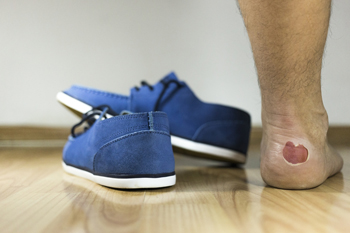

A blister on the foot can cause discomfort, despite its small size. It is defined as a bubble that is filled with liquid, forming directly over the portion of skin that has become damaged. It is the body’s natural defense in protecting the new skin as it grows, and it will gradually drain when it is no longer needed. Larger blisters may need to be drained, and this is done by puncturing the edge of the blister with a needle that has been sterilized with alcohol. It is suggested to people who are diabetic to refrain from doing this, which may help to prevent an infection from developing. Open blisters require an application of petroleum jelly, followed by covering them with a bandage. It is beneficial to remove the bandage at night, which may help to accelerate the healing process. Blisters on the feet occur from excessive friction and may be common among people who frequently run or jog. A podiatrist is specialized in guiding patients to learn specifically what causes blisters on the feet, and it is suggested that you contact this type of doctor who can provide you with preventive methods.
Blisters are prone to making everyday activities extremely uncomfortable. If your feet are hurting, contact Massimo Pietrantoni, DPM of Rochester Podiatry, LLP. Our doctor can provide the care you need to keep you pain-free and on your feet.
Foot Blisters
Foot blisters develop as a result of constantly wearing tight or ill-fitting footwear. This happens due to the constant rubbing from the shoe, which can often lead to pain.
What Are Foot Blisters?
A foot blister is a small fluid-filled pocket that forms on the upper-most layer of the skin. Blisters are filled with clear fluid and can lead to blood drainage or pus if the area becomes infected.
How Do Blisters Form?
Blisters on the feet are often the result of constant friction of skin and material, usually by shoe rubbing. Walking in sandals, boots, or shoes that don’t fit properly for long periods of time can result in a blister. Having consistent foot moisture and humidity can easily lead to blister formation.
Prevention & Treatment
It is important to properly care for the affected area in order to prevent infection and ease the pain. Do not lance the blister and use a Band-Aid to provide pain relief. Also, be sure to keep your feet dry and wear proper fitting shoes. If you see blood or pus in a blister, seek assistance from a podiatrist.
If you have any questions, please feel free to contact one of our offices located in Brighton and Greece of Rochester, NY . We offer the newest diagnostic and treatment technologies for all your foot care needs.